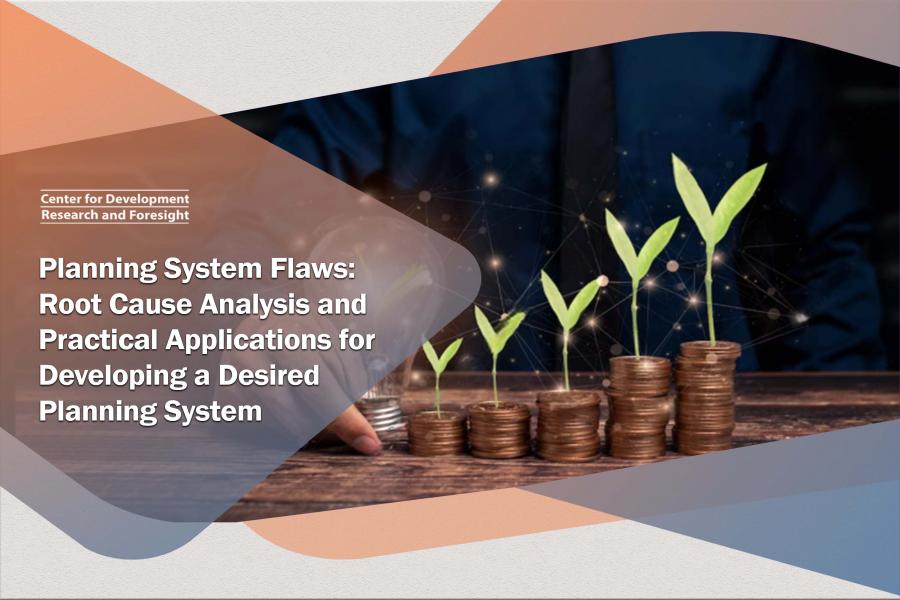
-
بررسی آییننامهها و دستورالعملهای برنامه هفتم پیشرفت
-
بررسی عوامل موثر بر افزایش تصادفات و تلفات جادهای و سوانح رانندگی و دادهکاوی تلفات انسانی
-
سازماندهی و بازآرایی فضایی آموزش عالی کشور
-
به روز رسانی سند ملی آمایش سرزمین
-
انجام مطالعات مناطق آزاد به عنوان نواحی پیشران اقتصادی کشور
-
اصلاح ساختار بودجه و پیاده سازی نظام یکپارچه مدیریت اطلاعات مالی دولت (IFMIS)

The objective of this report is to comprehensively analyze and identify the underlying causes of deficiencies within the planning system of the country. The report examines the development programs implemented over the past 45 years, assesses the legal framework, and evaluates the objectives and performance of the planning system.
By employing the five-why technique, the root causes of the deficiencies in the planning system have been identified. The findings reveal the following: Out of the 57 flaws identified in the planning system, 28 originate internally, 17 originate externally, and 12 have both internal and external origins.
While flaws in the preparation and compilation stages are primarily internally driven, it is noteworthy that flaws in the preliminary stages often have external origins or are associated with common flaws both within and outside the organization.
Furthermore, flaws identified in the approval and implementation phases predominantly stem from external sources. Conversely, flaws identified in the monitoring and evaluation stages frequently have internal origins within the organization.
The root causes of the flaws in the planning system include:
-Insufficient shared understanding of concepts among planners, policymakers, and executives.
-Centralized and non-participatory governance methods in the planning process.
-Lack of mechanisms to address conflicts of interest among elites.
-Overemphasis on current conditions without due consideration of future scenarios.
-Failure to develop an operational plan linked to the approved plan.
-Presence of biases in program approval.
-Overreliance on government resources without considering internal and external capacities and resources.
-Neglecting the planning system as a mechanism for policy correction and adjustment based on monitoring and evaluation outcomes.
Based on these findings, the following recommendations are proposed for the design of an improved planning system:
-The desired planning system should be developed based on the shared concepts and goals of the government and the nation.
-Establish a mechanism to ensure integrated governance grounded in popularization, transparency, and intelligence within the planning system.
-Design a mechanism for formulating development plans that incorporate measurable and output-oriented operational plans based on resource forecasts.
-Structure planning processes to prioritize problem-oriented and mission-oriented planning. Establish mechanisms for collaborative and interactive planning that involve the government, private sector, civil society, public, regions, and provinces according to their respective roles.
-Implement new regulations to shift from an absolute centralized approach in development programs to flexible, future-oriented, and dynamic programs. Introduce mechanisms for conflict resolution.
-Institutionalize monitoring and evaluation practices. Embed mechanisms for revising development plans based on monitoring and evaluation results.



